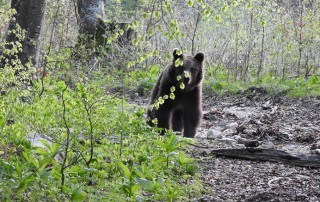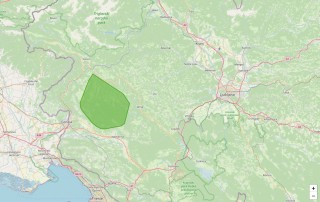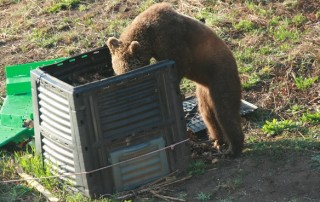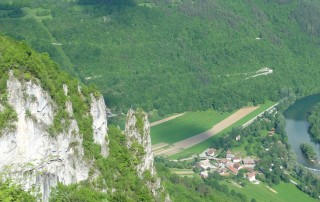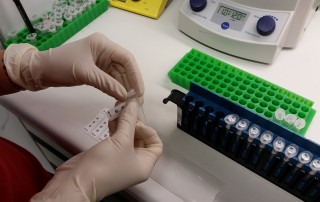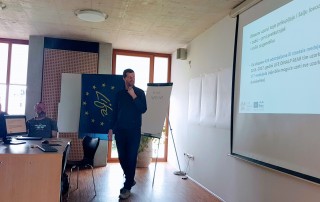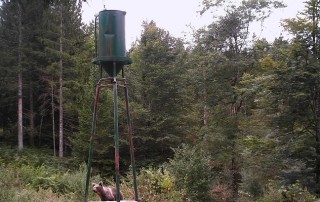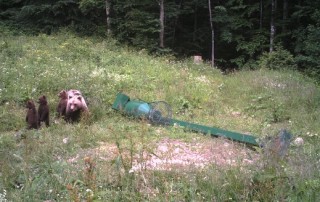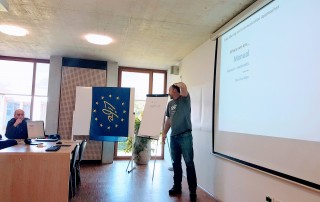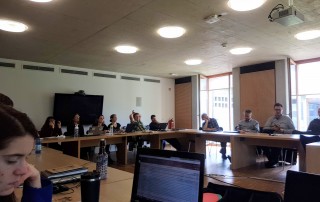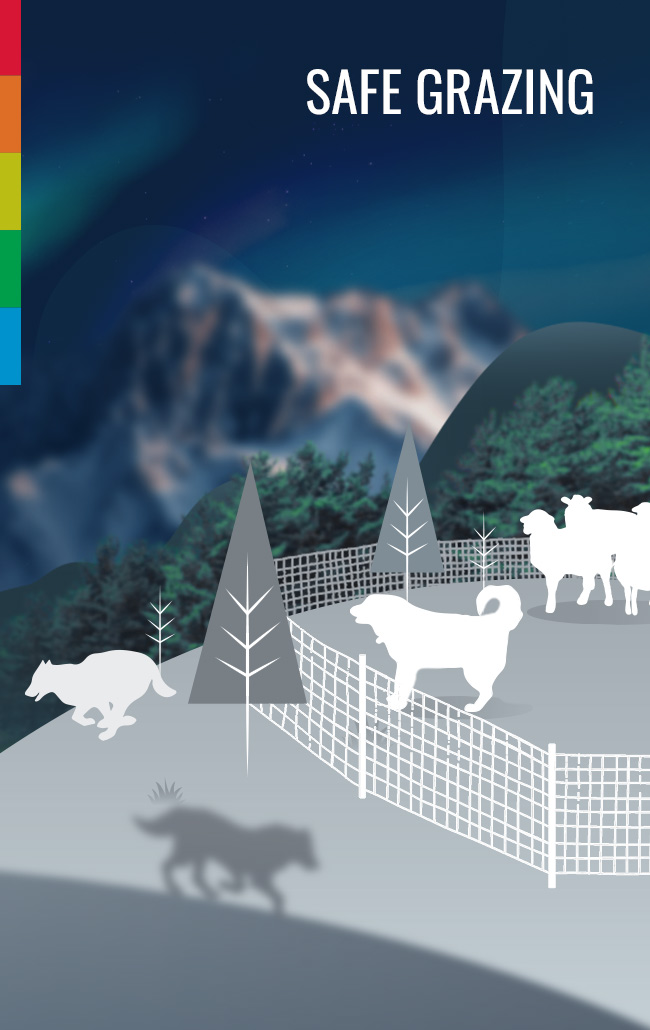ACTION C.5 – Establishment of optimization of an integrated, population-level surveillance of brown bear conservation status
Understanding of population parameters (population size, sex ratio, fecundity/mortality, spatial extent) and their temporal dynamics is one of conservation and management foundations for any animal population. The goal of this action is to start a comprehensive, optimized scheme for monitoring of the Alpine-Dinaric bear population that will cover its entire range within the participating countries.
Genetic sampling of brown bears is scheduled in all participating countries. Sampling will be done through non invasive methods in the core range of brown bear in Slovenia and Croatia and will involve hunters, foresters and other interested volunteers, combined with data collected in Action D.1. Opportunistic, year-round sampling will be done in the recovery zone in north-western part of the study area (western Slovenia, Italy and Austria).
Tissue samples and tooth cementum samples are routinely collected from detected bear mortality. We will used them to infer population size estimates, age structure and effective population size. Genetically tagged animals appearing in the cull will help us understand dispersal and population dilution through reproduction.
Counting bears on permanent counting sites will give us an estimate of minimum number of bears, number of cubs per female, relative dynamics of population size, reproduction and population range. Counting will be done by hunters three times a year in specific weather conditions.
There is already a wealth of information on lifetime reproductive output, primiparity and sex or age specific reproductive success. By augmenting these data from permanent counting sites, parentage and relatedness analysis, genetic data and inspection of reproductive organs of deceased bears we will be able to better understand age and sex specific reproductive outputs.
Veterinarians will inspect cadavers of deceased and live caught bears for infectious diseases and health status.
We will analyze currently implemented systems to handle damages done by bears in all participating countries for possible insufficiencies. To improve exchange of data and share experiences in population management and monitoring, we will compile a report of possible suggestions to harmonize data collection using experiences gained through collaboration.
By comparing all methods of estimating population sizes against currently most reliable estimates from genetic sampling, we will suggest the most cost-effective monitoring scheme which can be used when more expensive but also more precise methods are not available.
Latest C.5 actions:
Home range of bear »Rok« in our online database
We already reported about movements of brown bear male »Rok« in the pre-Alpine area (see the link here), and now [...]
»Rok« the brown bear from »Trnovski gozd« in Slovenia – what is he doing?
The brown bear male from the pre-alpine area of western Slovenia, nicknamed Rok at the time of capture, was the [...]
Impact factors in occurrence of human-bear conflicts
Among many different possible conflicts between humans and bears, those that are a consequence of bear feeding behaviour are the [...]
Guidelines for optimisation of bear population monitoring in Slovenia
In Slovenia, a variety of indicators for the brown bear population status, impact of bears on the environment and their [...]
What can data from long-term systematic counting at permanent counting sites tell us about bears in Slovenia?
Systematic bear counting on a network of permanent counting sites (feeding sites) is the oldest brown bear monitoring method in [...]
Minutes of the Workshop for Transboundary Monitoring available
In May, University of Ljubljana organized a two-day workshop. The workshop was organized in frame of the project LIFE DINALP [...]



